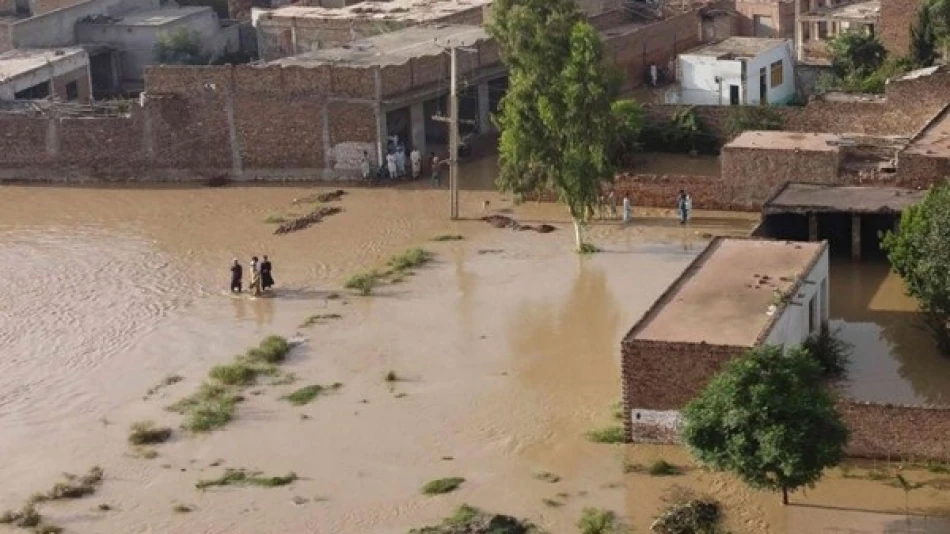
Deadly Floods Claim 49 Lives in Northwest Pakistan
Pakistan Floods Kill 49 as Climate Vulnerability Exposes Infrastructure Crisis
At least 49 people have died in sudden flash floods triggered by heavy rainfall in northwestern Pakistan, highlighting the country's acute vulnerability to extreme weather events that are becoming increasingly frequent and deadly. The latest disaster underscores Pakistan's struggle with inadequate disaster preparedness despite being ranked among the world's most climate-vulnerable nations.
Northwestern Regions Bear the Brunt
Pakistani officials confirmed the death toll from flash floods that swept through northwestern areas following intense rainfall. The sudden nature of the flooding left communities with little time to evacuate, contributing to the high casualty count in what has become a recurring pattern for the region.
Northwestern Pakistan, including provinces like Khyber Pakhtunkhwa, regularly experiences monsoon-related flooding, but the intensity and unpredictability of these events have increased significantly in recent years. The mountainous terrain amplifies the impact of heavy rainfall, creating dangerous conditions where water rapidly accumulates and rushes through valleys and populated areas.
A Pattern of Climate Disasters
Pakistan's Growing Climate Crisis
This latest flood disaster comes less than two years after Pakistan experienced its worst flooding in decades during 2022, when unprecedented monsoon rains submerged one-third of the country and killed over 1,700 people. The 2022 floods caused economic damages exceeding $30 billion and displaced millions, demonstrating the country's extreme vulnerability to climate-related disasters.
Pakistan contributes less than 1% of global greenhouse gas emissions yet ranks eighth on the Global Climate Risk Index, making it one of the most affected countries by climate change impacts. The nation faces a cruel paradox: bearing the brunt of climate consequences while lacking the resources to adequately prepare for or respond to such disasters.
Monsoon Season Intensification
Climate scientists have linked the increasing severity of Pakistan's monsoon seasons to global warming, which intensifies the water cycle and creates more extreme precipitation events. The country's geography, with the Indus River system and mountainous northern regions, makes it particularly susceptible to flash flooding when weather patterns shift dramatically.
Economic and Development Implications
Recurring flood disasters create a devastating cycle for Pakistan's economy and development prospects. Each major flooding event requires massive reconstruction efforts that strain government resources and international aid budgets, while destroying agricultural land that millions depend on for their livelihoods.
The agricultural sector, which employs nearly 40% of Pakistan's workforce, faces repeated disruption from flooding, contributing to food insecurity and rural poverty. This pattern forces the government to repeatedly divert funds from long-term development projects to emergency response and reconstruction efforts.
Regional Context and Global Implications
Pakistan's climate vulnerability reflects broader challenges facing South Asian nations, where dense populations, inadequate infrastructure, and limited resources collide with increasingly extreme weather. Countries like Bangladesh and India face similar monsoon-related disasters, but Pakistan's mountainous terrain and political instability compound the challenges.
The international community has recognized Pakistan's disproportionate climate burden, with the country becoming a key advocate for loss and damage funding at global climate conferences. However, the gap between international climate commitments and actual adaptation funding remains vast, leaving vulnerable nations like Pakistan to face these disasters with insufficient resources.
The recurring nature of these floods demonstrates that Pakistan needs not just emergency response capabilities, but fundamental infrastructure improvements and early warning systems that can save lives when the next inevitable disaster strikes.
Most Viewed News

 Layla Al Mansoori
Layla Al Mansoori






